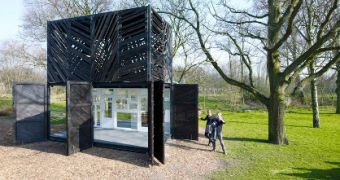People currenly visiting or living in the northern part of Amsterdam can proudly say that, as of recently, they have been given the chance to relax and enjor their leisure time in a coffee bar that abides by “green” standards.
This environmentally-friendly café goes by the name of Noorderparkbar and its construction is the result of two design firms working together so as to gather wood and second-hand materials from about 100 free-traders.
Aparrently, those who were offered the chance were more than willing to chip in and do whatever they could to help build this green coffee bar, with the necessary wood even coming from an old formwork plant and a temporary hospital. Quite a diversity of sources, isn't it?
According to ecofriend.com, the only things that actually had to be purchased straight from constructions-oriented stores were 55 liters of paint, some ceramic tiles and two toilets.
Now, just one quick glance at this very short list makes it quite obvious that these purchases are not the sort of things you could or might want to recycle, so all in all it's quite safe to say that no efforts were spared in the attempt to build a trully environmentally-friendly coffee place.
Even if the two design firms which made it their mission to build the Noorderparkbar simply had to go for buying new toilets and new ceramic tiles, what is interesting is that these were chosen in such a manner that they still convey the idea that the environment's safe keeping is at the centre of their preocupations.
By this we mean that they are all white and green – both the toilets and the ceramic tiles –, something which can be understood as the desire to remain close to nature and its natural ways.
Last but not least, this innovative coffee place in Amsterdam makes a statement about humanity's need to start paying more attention to the natural world by means of its roof design: the beams are arranged in such a manner that, when seen from a distance, they resemble sun rays.
Although no clear information regarding the final costs of this endeavour was yet made public, we can only assume that no significant amounts of money were spent, and therefore we whole-heartedly encourage such future undertakings.

 14 DAY TRIAL //
14 DAY TRIAL //